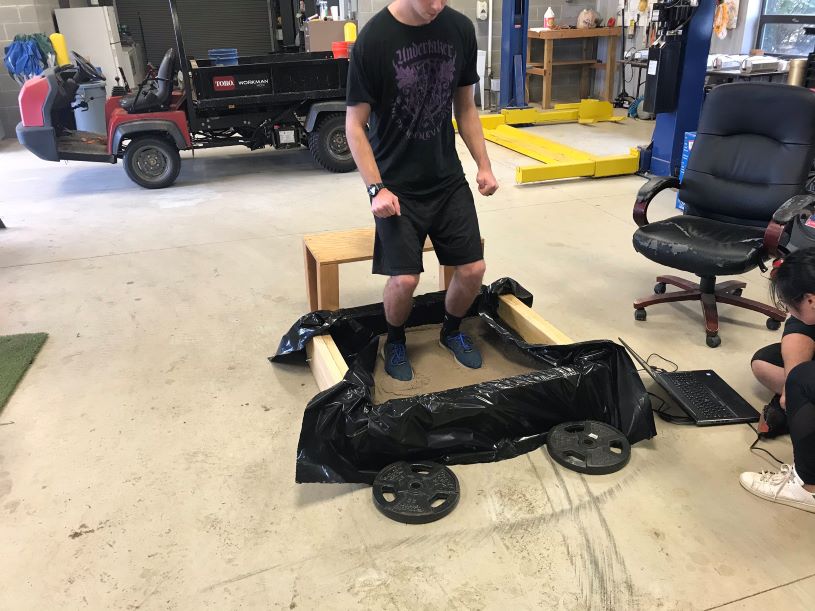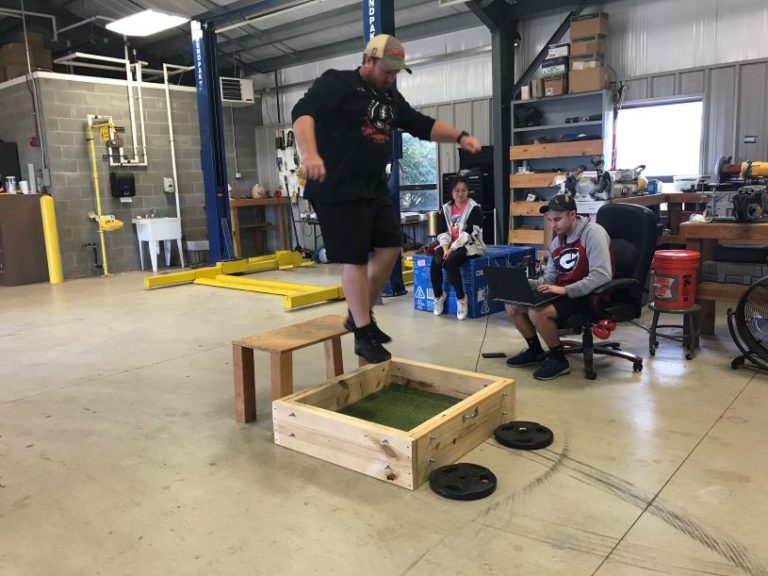By Erick Begitschke
It is impossible to completely alleviate non-contact athlete injuries during sporting events. However, research that evaluates the different aspects of field creation and playing surface maintenance may play a critical role in the reduction of athlete injuries.
Historically, research has predominantly focused on advances in safety equipment, with minimal attention to field playability and performance. Natural turfgrass sports fields can exhibit within-field variations due to climatic and agronomic conditions, field construction, field management, foot traffic patterns from field usage, and other contributing factors (Straw et al., 2020). Variations within a field influence the predictability of playing surfaces and require athletes to make abrupt and frequent adjustments that may lead to an increase in ground-derived non-contact injuries.
The variability of weed presence within sports fields can ultimately impact field longevity and player safety. Weeds lower the aesthetic quality of the field surface, and may outcompete desired turfgrass species for water, nutrients and light. Additionally, differences in morphology and growth rates between species may impact ball roll and player-surface interactions. Reduced stress tolerance of common turfgrass weeds to wear and traffic may ultimately reduce the number of games played, and often requires additional management inputs or more frequent renovation.
Controlling weeds and maintaining a dense, healthy stand of turfgrass provides the best playing surface; however, constantly changing environments, the presence of microclimates, and strained budgets make this a tough reality to achieve. In addition, increased EPA regulations, societal concerns about pesticides, documented herbicide resistance, labor shortages, and overused fields have made weeds more difficult to control. Therefore, many sports field managers are implementing site-specific management strategies and adopting a threshold approach to weed management. However, one question still remains, what is the appropriate threshold for weed control in order to maintain a safe and functional playing surface?
Research at the University of Georgia aims to gain a better understanding of the direct impact of weeds on player safety and field longevity with the goal of providing weed control recommendations to sports field managers that address player safety. The first step of this research is to develop a method that accurately describes the interaction between athletes and various turfgrass systems. Turfgrass researchers at the University of Georgia recently introduced a new diagnostic methodology aimed at evaluating relationships between within-field variations of sports field properties and ground-derived athlete injuries by simultaneously recording agronomic field data (soil moisture, soil compaction, surface hardness, etc.) and injury frequency and location within monitored fields (Straw et al., 2018). Although results from this work highlighted potential relationships between field properties and ground-derived injuries, agronomic conditions at the exact moment of injury were not known. Therefore, it is difficult to determine the accuracy of athlete responses to the specific field conditions presented in the aforementioned study.
Past research comparing objectively measured ground conditions to athlete performance and physiology, as well as injury occurrence, has primarily been conducted in situ, while comparisons to athlete biomechanics has primarily been laboratory based. Consequently, there have been minimal associations made between laboratory findings and field research. The creation of a portable modular system that can be manipulated to reflect a variety of sports field scenarios (turfgrass species, weed presence, canopy heights, soil profiles, agronomic conditions, etc.) while utilized in a laboratory setting could provide valuable and more accurate athlete response data to help identify the exact field conditions that lead to an increase in injury occurrence.
A force plate is a device used in biomechanical research and sports medicine to measure the forces exerted on the ground by a body. These forces (ground reaction forces) are measured by a series of sensors on the plate. However, it is very difficult to relate these interactions to field conditions without having a surface or material profile between the athlete and the force plate. Biomechanical researchers are often concerned that the addition of a surface on the force plate may negate the validity of the data acquired. Recently, Ismail et al. (2018) examined the influence of an additional surface (synthetic material) on force plate data during walking and running exercises. Researchers determined that the additional surface placed on the force plate had no significant impact on the magnitude of the vertical ground reaction force data, but there were some changes that occurred on the heel/forefoot strike force ratio during the walking task.
Researchers at the University of Georgia are currently developing a novel ground reaction platform device that utilizes a portable force plate underneath a simulated natural turfgrass system in order to provide reproducible and valid ground reaction force data (see Figures 1a, above, and 1b, below). Once properly calibrated, this device will be used to isolate specific sources of within-field variation, such as weed presence, to determine the effects those sources of variation have on the actual forces entering an athlete’s body during physical maneuvers.

A preliminary study was conducted at the Athens Turfgrass Research and Education Center to test the functionality of the novel ground reaction platform device in the fall of 2021. The primary objective of the test was to determine whether the force plate was capable of providing reproducible data when placed beneath various playing surfaces. The test involved four participants at the University of Georgia who performed basic athletic maneuvers on the platform containing four different surfaces. The maneuvers included a standing maneuver, a walking maneuver, a jump landing maneuver, and a step landing maneuver. The four surfaces included the force plate by itself within the ground reaction platform, a piece of artificial turf directly on top of the force plate, a piece of natural sod (‘Ironcutter’ hybrid bermudagrass, cut to a height of 1 inch), and a 3-inch layer of USGA spec sand. Each participant performed four replications of each maneuver on each of the four surfaces. The force plate was used to measure the peak vertical force in Newtons (N) exerted on the force plate, which in turn provides the amount of force being absorbed back onto the body of the participant (see Figure 2). Additionally, the peak vertical force data were normalized based on the body weight of each participant determined during the standing maneuver.

Only walking and standing maneuvers were performed on the sod surface due to the presence of high soil moisture within the sod during trial conductance. However, significant differences were detected between the other surfaces when each of the maneuvers were evaluated separately (see Figure 3). For the jump landing maneuver, the sand surface produced the largest peak force exerted on the bodies of the participants when compared to the plate by itself and the artificial turf surface. Similar trends were observed with the step landing maneuver. Although the sand surface provided the largest peak force values, the artificial turf surface provided a significantly lower peak force when compared to the force plate by itself and the sand surface. No significant differences were detected during the walking maneuver.

As mentioned, the primary objective of this project was to evaluate the ability of the force plate to provide reproducible data when placed beneath various materials and surfaces. Although preliminary, the lack of significant variation observed between replications of the same surface provides promising results for the implementation of the ground reaction platforms within future research projects. However, the differences in data observed with respect to surface type were not expected. In the case of the sand surface, differences may be attributed to the lack of playing surface material, whereas the lack of complete soil/subsurface profiles may have affected the artificial turf and sod. Therefore, further research is needed to confirm results found during this preliminary study. Research involving collegiate-level club sport athletes is scheduled to be completed during the fall of 2022 in order to evaluate more replicates of similar maneuvers on the ground reaction platforms using complete soil profiles and a hybrid bermudagrass surface.
In addition to the research being conducted in the biomechanics lab, researchers at the University of Georgia will simultaneously conduct related studies evaluating the effects of weeds on athlete safety and playing surface longevity in a field setting. Recently, Brosnan et al. (2014) evaluated the playing surface quality of 100% stands of hybrid bermudagrass, large crabgrass, and white clover subjected to different traffic regimes. The surfaces of the large crabgrass and white clover stands lost green cover nearly 12 times faster than hybrid bermudagrass while also exhibiting increases in surface hardness. Additionally, hybrid bermudagrass retained higher rotational resistance values compared to large crabgrass and white clover, suggesting that athletes have increased traction to make cutting and turning motions on hybrid bermudagrass versus weeds. While this research provides valuable insight into weed response to traffic and subsequent impact on playability, further research is needed to evaluate the safety and longevity of hybrid bermudagrass and weed mixtures typically found on community sports fields when subjected to different traffic regimes.
Running lanes of hybrid bermudagrass are currently being established at the Athens Turfgrass Research and Education Center in Athens, Ga., to simulate natural turfgrass sports fields with various amounts of weed pressure. Weeds will be transplanted into mature stands of bermudagrass in order to create various amounts of weed pressure. Research plots will be subjected to four incremental amounts of traffic throughout the growing season. Green cover, surface hardness, and rotational resistance will be measured similar to Brosnan et al. (2014) following treatment implementation. In addition to these standard response variables, athletes will be recruited to perform athletic maneuvers on each of the plots, similar to the lab experiments conducted with the ground reaction platforms, and data will be collected using wearable technologies placed on the lower extremities of each athlete. These devices can not only measure the ground reaction force exerted on each athlete, but they can also measure slippage and traction when athletes make cutting movements. The combination of these data can provide recommendations for an acceptable threshold of weed control to maintain safe and functional sports fields.
Erick Begitschke is a graduate research assistant at the University of Georgia, Athens, Ga.
References
Brosnan, J.T., Dickson, K.H., Sorochan, J.C., Thoms, A.W. and Stier, J.C. (2014). Large crabgrass, white clover, and hybrid bermudagrass athletic field playing quality in response to simulated traffic. Crop Science, 54(4), 1838-1843.
Ismail, S.I., Nunome, H., Marzuki, F.F. and Suaidi, I. (2018). The influence of additional surface on force platforms ground reaction force data during walking and running. American Journal of Sports Science, 6, 78-82.
Straw, C.M., Samson, C.O., Henry, G.M. and Brown, C.N. (2018). Does variability within natural turfgrass sports fields influence ground-derived injuries? European Journal of Sport Science, 18(6), 893-902.
Straw, C.M., Samson, C.O., Henry, G.M. and Brown, C.N. (2020). A review of turfgrass sports field variability and its implications on athlete-surface interactions. Agronomy Journal, 112(4), 2401-2417.


